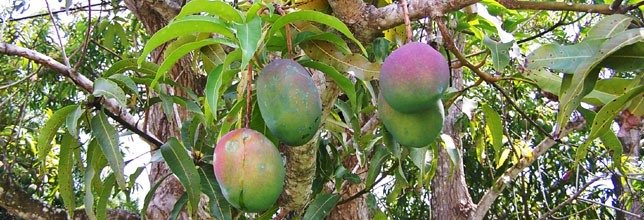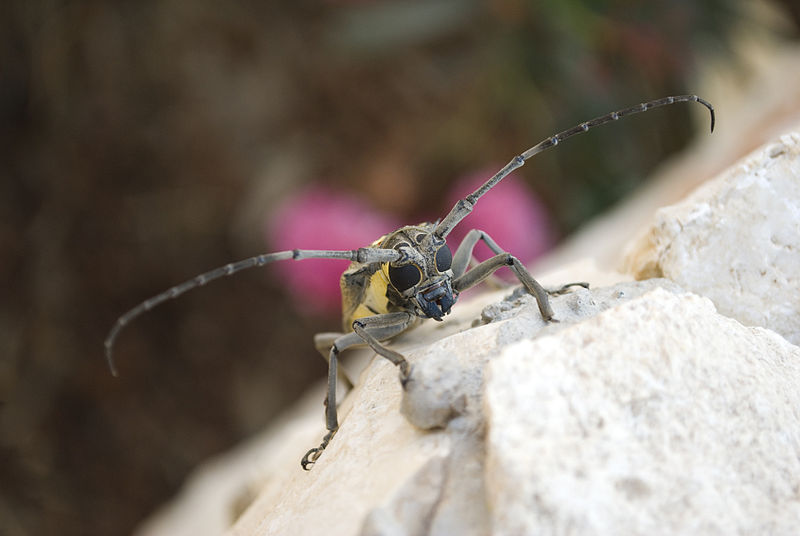
The Mango's Friends...and Enemies
Many organisms interact with the mango everyday! As mentioned previously, many insects are crucial for the reproduction of the mango plant. Without such insects as flies, butterflies, and moths, this plant would cease to exist! Many other organisms also come in contact with the mango but a less than desirable outcome results. In these cases, the mango plant is harmed in some way that results in disease, lack of growth, or death. Mangos also share a special relationship with endomycorrhizal fungi,
which are members of the phylum Glomeromycota. These fungi
live within the plant and provide nutrients to the mango such as
nitrogen, phosphorus, and potassium. In turn, the mango gives
sugars produced via photosynthesis to the fungi. This
relationship is an excellent example of a mutualistic symbiotic
relationship!
Mangos also share a special relationship with endomycorrhizal fungi,
which are members of the phylum Glomeromycota. These fungi
live within the plant and provide nutrients to the mango such as
nitrogen, phosphorus, and potassium. In turn, the mango gives
sugars produced via photosynthesis to the fungi. This
relationship is an excellent example of a mutualistic symbiotic
relationship!Many insects are known to attack the mango plant. Many scale insects cause sections of mango trees to become yellowed and die. In South
 America, scales are especially
prevalent as 11 species of scales are known to infect mango trees.
Borers are also common pests. As their name suggets, these
insects "bore" into the tree and cause death for the plant.
Mites also feed on the leaves, flowers, and fruits of the mango
tree. One species of mite prevalent in Florida, the avocado
red mite, also attacks
avocados. Finally, various species of fruit flies also
attack mangos especially in India, Central America, and the
Philippines.
America, scales are especially
prevalent as 11 species of scales are known to infect mango trees.
Borers are also common pests. As their name suggets, these
insects "bore" into the tree and cause death for the plant.
Mites also feed on the leaves, flowers, and fruits of the mango
tree. One species of mite prevalent in Florida, the avocado
red mite, also attacks
avocados. Finally, various species of fruit flies also
attack mangos especially in India, Central America, and the
Philippines.
Besides insects, many other species, including fungal species infect mangos. The European Mistletoe, a parasitic plant, takes nutrients from the mango and eventually kills the plant. Oidium mangiferae, a powdery mildew, is one of the most serious mango infections. This fungus, common in India, attacks flowers and greatly affects fruit yield. Mango scab, caused by Elsinoe mangiferae, is another fungal threat. This infection causes lesions to form on the stem and young fruits. Finally, anthracnose causes harm to flowers, fruit and leaves. This fungus creates black lesions to develop on these areas, which lead to death. All of the mentioned fungal diseases become more of a problem in wet climates. Other organisms can cause blight, leaf spot, sap rot, and many other diseases. Thankfully, many mango trees are able to fight these infections and produce this tasty fruit. Therefore we, as well as animals, can utilize the mango as a food source! Even better, this food source is sustainable. As it can self fertilize or cross fertilize, mango trees are able to reproduce without another plant! Also, according to the nonprofit organization Change for India, mango trees are sustainable both nutritionally and economically. By growing mango trees, a family can both grow food for themselves as well as a product to sell and gain capital!
Continue on to read even more interesting facts about the mango or return home.

